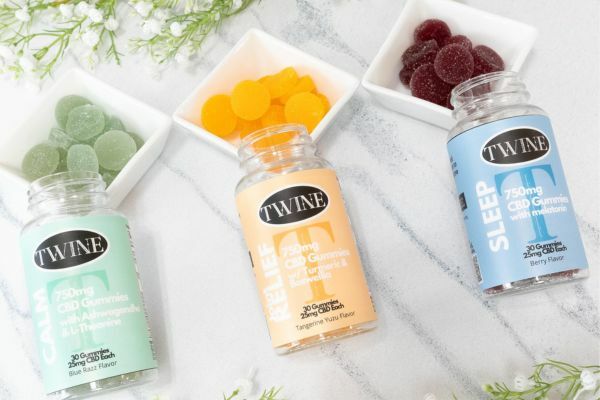Why 1 out of 3 Americans use CBD.
Posted by Twine Life on Dec 29th 2020
CBD is officially everywhere. Its popularity has skyrocketed. What started as a niche alternative health treatment has become a nationwide craze. And it doesn’t just show up as oils and tinctures anymore. There is whole array of curious CBD products, including lattes, makeup, bedsheets, bath bombs, and even dog treats.
But is CBD a wonder drug, or just another health fad? There’s no shortage of opinions out there, but we can discern a lot from CBD statistics. Clinical trials of CBD and anecdotal surveys of people using CBD help to put the prevalence of CBD use and its potential health benefits into perspective.
What is CBD?
When some people hear “CBD,” they immediately think to marijuana. And while there is a connection, it’s not as close as one might think. Since recreational and medical cannabis is available in several states now, it’s important to note the differences. CBD is primarily a hemp derivative, hemp and marijuana are to cannabis as lemons and oranges are to citrus. Two related but different plants, from the same "family."
Let’s take a step back. Both hemp and marijuana fall into the cannabis genus. Cannabis plants contain two naturally-occurring compounds: cannabidiol (CBD) and tetrahydrocannabinol (THC). CBD and THC are both cannabinoids but have different effects on the body. Most prominently, THC has psychoactive effects and CBD doesn’t, which is why CBD doesn’t make you feel high regardless of how much you take.
Marijuana and hemp each contain both compounds but in different ratios. Hemp has much lower levels of THC and larger amounts of CBD, which is why it’s often used for CBD products. Marijuana, on the other hand, has significantly more THC.
CBD uses
People use CBD for almost everything. Name a medical condition and there’s likely someone out there treating it with CBD or other cannabis products. But when someone claims that CBD cured their migraines or skin rash, take it with a grain of salt. Because the CBD industry is so new, there simply hasn’t been enough research to fully understand its effects yet.
While it shows plenty of promise in treating various conditions, “it is not a one-size-fits-all [remedy] to treat specific conditions or symptoms of those conditions for every individual,” says Manisha Singal, MD. “Research on the benefits and action of CBD in topical formulations as well as ingestible forms is ongoing. That experimentation is in its preliminary stages and there is a long way to go. The medical potential for CBD and other cannabinoids is undeniable, but medical research takes time and careful analysis.”
How common is CBD use?
- 33% of American adults have used CBD once or more. (SingleCare, 2020)
- 64% of Americans are familiar with CBD and/or CBD products. (Gallup, 2019)
- An estimated 64 million Americans have tried CBD in the last 24 months. (Consumer Reports, 2019)
- Of those who use CBD, 22% said it helped them supplement or replace prescription or over-the-counter drugs. (Consumer Reports, 2019)




